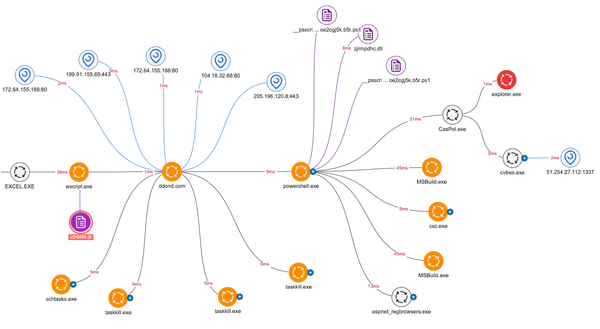Purple Team Exercises: Bridging Offensive and Defensive Security with Actionable Techniques

Purple teaming represents one of the most effective approaches to modern cybersecurity, yet many organizations struggle to implement it effectively. By combining the offensive expertise of red teams with the defensive capabilities of blue teams in collaborative exercises, purple team operations create a feedback loop that dramatically accelerates security improvement. Unlike traditional security testing, which often results in lengthy reports with minimal practical impact, purple team exercises focus on real-time learning, detection improvement, and control validation.
In this comprehensive guide, we'll explore the methodologies, tools, and techniques for implementing effective purple team exercises that transform security posture through actionable insights. Whether you're a security leader, penetration tester, or SOC analyst, this article will provide concrete strategies for bridging offensive and defensive security in your organization. Building upon our advanced red team techniques and blue team strategies, we'll show how these disciplines converge in purple team operations.
Understanding the Purple Team Paradigm
Before diving into implementation details, it's essential to understand what makes purple teaming different from traditional security testing approaches.
Beyond Red vs. Blue: The Collaborative Mindset
Traditional security exercises often pit red teams against blue teams in an adversarial relationship:
- Traditional Red Team Operations:
- Focus on evading detection
- Operate with minimal blue team knowledge
- Evaluate overall security effectiveness
- Produce findings reports after exercises conclude
- Traditional Blue Team Operations:
- Detect and respond to security incidents
- Often lack visibility into attacker techniques
- Develop defensive capabilities independently
- Improve based on historical incidents
Purple team exercises transform this dynamic into a collaborative process:
- Shared Objectives:
- Both red and blue teams work toward security improvement
- Focus on detection and response capability enhancement
- Prioritize learning over "winning"
- Develop mutual understanding of strengths and weaknesses
- Transparent Operations:
- Red team actions are disclosed to blue team in real-time
- Blue team detection strategies are openly discussed
- Knowledge transfer occurs throughout the exercise
- Results are immediately actionable
This collaborative approach yields significantly faster security improvement than traditional models, as detection gaps can be identified and addressed in real-time rather than after a lengthy engagement. The primary objective shifts from demonstrating vulnerabilities to improving overall security posture.
Purple Team Exercise Types
Purple team exercises can take several forms, each with specific objectives:
- Technique Validation:
- Focus on specific attack techniques
- Validate detection and response for known TTPs
- Typically shorter exercises (hours to days)
- Often conducted as regular training activities
- Scenario-Based Exercises:
- Follow realistic attack scenarios
- Chain multiple techniques together
- Evaluate end-to-end detection and response
- Typically longer exercises (days to weeks)
- Continuous Purple Teaming:
- Integrate into regular security operations
- Conduct ongoing technique validation
- Build into security improvement processes
- Establish as part of security culture
Organizations new to purple teaming should typically start with technique validation exercises to build capability and confidence before progressing to more complex scenario-based approaches. The most mature organizations adopt continuous purple teaming as part of their security operations lifecycle.
Building an Effective Purple Team Program
Implementing purple team exercises requires careful planning, clear objectives, and the right organizational structure. Let's explore the key components of a successful program.
Organizational Structure and Roles
Effective purple team operations require clear roles and responsibilities:
- Exercise Facilitator:
- Coordinates the overall exercise
- Ensures focus remains on security improvement
- Mediates between red and blue perspectives
- Documents findings and action items
- Red Team Operators:
- Execute attack techniques
- Provide technical expertise on offensive tactics
- Adapt techniques based on defensive responses
- Document execution details and artifacts
- Blue Team Defenders:
- Monitor detection systems during exercises
- Implement and tune detection rules
- Document detection strategies and blind spots
- Develop response playbooks based on findings
- Subject Matter Experts (SMEs):
- Provide domain expertise for specific technologies
- Support both offensive and defensive activities
- Help analyze root causes of detection gaps
- Recommend architectural improvements
Organizations may implement these roles using dedicated staff or shared resources based on size and maturity. The most important factor is clearly defining responsibilities and ensuring all participants understand the collaborative nature of the exercise.
Exercise Planning and Preparation
Thorough planning is essential for effective purple team exercises:
- Environment Preparation:
- Ensure systems are properly instrumented for logging
- Verify baseline detection capabilities are in place
- Create isolation mechanisms for high-risk techniques
- Implement appropriate backup and recovery options
- Communication Channels:
- Establish real-time communication methods
- Define escalation procedures for critical issues
- Create documentation templates for findings
- Setup collaboration platforms for shared analysis
- Stakeholder Management:
- Identify key stakeholders for findings
- Establish reporting mechanisms and cadence
- Define roles for observers and participants
- Set expectations for outcomes and deliverables
Scope Definition:
# Example scope document sections
- Target Systems: [specific systems, networks, or applications]
- Techniques: [specific TTPs to be tested, referenced by MITRE ATT&CK]
- Timeframe: [start and end dates/times]
- Constraints: [techniques to avoid, systems to exclude]
- Success Criteria: [specific detection or response capabilities to validate]
Proper preparation ensures exercises run smoothly and produce actionable results. For organizations integrating with existing SOC operations, these planning processes should align with established operational procedures.
Metrics and Success Criteria
Define clear metrics to measure the effectiveness of purple team exercises:
- Detection Metrics:
- Technique detection rate (% of techniques detected)
- Detection time (time from execution to detection)
- False positive rate during exercises
- Coverage gaps identified
- Response Metrics:
- Response time (time from detection to containment)
- Playbook effectiveness (% of incidents handled via established procedures)
- Escalation accuracy (appropriate escalation of significant findings)
- Containment effectiveness (successful isolation of threats)
- Program Improvement Metrics:
- Findings remediation rate (% of identified issues addressed)
- Detection improvement over time (trend in detection rates)
- Knowledge transfer effectiveness (participant skill improvement)
- Time to implement new detection capabilities
These metrics should be tracked across exercises to demonstrate security improvement and justify program investments. Effective measurement requires baseline assessment before implementing purple team exercises to enable meaningful comparison.
Executing Purple Team Techniques
The heart of purple team exercises is the execution and analysis of specific attack techniques. Let's explore the methodology for effective technique execution and evaluation.
Technique Selection Using MITRE ATT&CK
The MITRE ATT&CK framework provides a comprehensive catalog of adversary tactics and techniques, making it an ideal foundation for purple team exercises:
- Prioritization Methods:
- Threat intelligence alignment (techniques used by relevant threat actors)
- Detection gap analysis (techniques with known detection weaknesses)
- Risk-based selection (techniques with highest potential impact)
- Complexity progression (from basic to advanced techniques)
- Technique Documentation:
- Detailed execution procedures for each technique
- Required tools and infrastructure
- Expected artifacts and indicators
- Cleanup and restoration procedures
Creating a Technique Roadmap:
# Example technique roadmap structure
Q1 Focus: Initial Access and Execution
- T1566.001: Spearphishing Attachment
- T1204.002: Malicious File Execution
- T1059.001: PowerShell Execution
Q2 Focus: Persistence and Privilege Escalation
- T1136.001: Create Local Account
- T1546.001: Change Default File Association
- T1548.002: Bypass User Account Control
Q3 Focus: Defense Evasion and Credential Theft
- T1112: Modify Registry
- T1218.011: Rundll32 Execution
- T1003.001: LSASS Memory Dumping
This structured approach ensures consistent execution and enables comparison across techniques and exercises. For organizations concerned with credential theft protection, specific emphasis on those techniques may be warranted.
Implementation Tools and Frameworks
Several tools and frameworks facilitate effective purple team exercises:
- Open-source library of testable attack techniques
- Mapped to MITRE ATT&CK framework
- Provides execution guidance and cleanup instructions
- Enables consistent, repeatable testing
- Caldera:
- Automated adversary emulation platform
- Enables complex attack chain execution
- Provides detailed logging of attack actions
- Supports custom adversary profiles
- Detection Validation Tools:
- Elastic Detection Engine
- Sigma rules testing frameworks
- SIEM rule validation tools
- Log correlation analyzers
- Purple Team Enablement Platforms:
- Scythe
- AttackIQ
- Cymulate
- Randori
Atomic Red Team:Example Atomic Red Team test execution:
# Execute an Atomic Red Team test for PowerShell execution
Invoke-AtomicTest T1059.001 -TestNumbers 1
These tools provide structure and consistency for purple team exercises, reducing the technical expertise required and enabling more organizations to benefit from this approach. Open-source tools are often sufficient for organizations beginning their purple team journey, while commercial platforms may offer additional capabilities for mature programs.
Real-Time Analysis and Collaboration
Unlike traditional security testing, purple team exercises involve real-time analysis and collaboration:
- Exercise Execution Process:
- Technique introduction and explanation
- Step-by-step execution with pauses for analysis
- Real-time detection review and discussion
- Immediate adjustment and re-testing
- Documentation During Exercises:
- Real-time logging of technique execution details
- Documentation of detection successes and failures
- Capture of relevant logs and artifacts
- Recording of improvement recommendations
Collaboration Techniques:
# Example collaboration workflow
1. Red team announces technique to be executed (T1003.001 - LSASS Memory Dumping)
2. Blue team confirms monitoring readiness
3. Red team executes technique with narration
4. Blue team reports what was/wasn't detected
5. Joint analysis of detection gaps
6. Blue team implements detection improvements
7. Red team re-executes technique with variations
8. Team documents findings and improvements
This collaborative approach enables immediate learning and improvement, significantly accelerating security capability development compared to traditional models. For examples of effective detection strategies, consult our article on advanced threat hunting techniques.
Advanced Purple Team Scenarios
Beyond basic technique validation, advanced purple team exercises can simulate complex attack scenarios for comprehensive security validation.
End-to-End Attack Chain Simulation
Simulating complete attack chains provides valuable insights into detection and response capabilities:
- Attack Chain Design:
- Select techniques across the entire kill chain
- Create realistic progression scenarios
- Incorporate dwell time between stages
- Include multiple attack paths
- Detection Capability Mapping:
- Identify which chain components are detected
- Measure detection time across the kill chain
- Evaluate overall attack visibility
- Assess prevention capabilities at each stage
Example Attack Chain:
# Sample attack chain for purple team exercise
1. Initial Access: Spearphishing with malicious document
2. Execution: Macro execution and PowerShell download
3. Persistence: Scheduled task creation
4. Privilege Escalation: Credential theft from LSASS
5. Defense Evasion: Process injection to evade EDR
6. Credential Access: Pass-the-hash for lateral movement
7. Lateral Movement: WMI execution on remote systems
8. Collection: Sensitive data identification and staging
9. Exfiltration: Data exfiltration via encrypted channels
End-to-end scenarios help identify detection gaps that might be missed in isolated technique testing. They also better simulate real-world attacks where multiple techniques are combined to achieve objectives. For insight into realistic attack chains, reference our article on how attackers compromise enterprise networks.
Adversary Emulation Exercises
Advanced purple team programs can incorporate adversary emulation to simulate specific threat actors:
- Threat Intelligence Integration:
- Select relevant threat actors based on industry
- Research documented TTPs for selected actors
- Create actor-specific attack playbooks
- Develop realistic IOCs and artifacts
- Custom Tooling Development:
- Create or modify tools to match adversary capabilities
- Develop realistic malware simulants
- Implement actor-specific C2 mechanisms
- Replicate known IOCs and behaviors
Emulation Planning:
# Example adversary emulation plan structure
Target Adversary: APT29
Intelligence Sources: [MITRE ATT&CK, threat reports, industry analysis]
Key Techniques:
- Custom PowerShell downloader (T1059.001)
- WMI persistence (T1546.003)
- Credential harvesting via NTDS.dit extraction (T1003.003)
- SMB-based lateral movement (T1021.002)
- Custom C2 protocol over HTTPS (T1071.001)
Adversary emulation provides the most realistic validation of security controls and helps organizations prepare for the specific threats they face. This approach requires considerable expertise but offers the highest fidelity security testing. Organizations concerned with advanced persistent threats should consider incorporating this approach as their purple team program matures.
Detection Engineering Through Purple Teaming
A primary benefit of purple team exercises is the acceleration of detection engineering capabilities. Let's explore how to leverage these exercises for effective detection development.
Developing and Testing Detection Rules
Purple team exercises provide an ideal environment for detection rule development:
- Multi-Signal Detection Strategies:
- Process-based detection (execution, command line parameters)
- File-based detection (creation, modification, access patterns)
- Network-based detection (connection patterns, protocol anomalies)
- Identity-based detection (authentication patterns, privilege usage)
Detection Rule Examples:
# Example Sigma rule for LSASS memory dumping
title: LSASS Memory Dump via ProcDump
id: 5ef9ea2b-3c0f-4bf1-8f3d-b22b0d2b7999
status: stable
description: Detects the use of ProcDump to dump the LSASS process memory
author: Purple Team
date: 2023/04/15
modified: 2023/06/01
logsource:
category: process_creation
product: windows
detection:
selection:
CommandLine|contains|all:
- 'procdump'
- 'lsass'
condition: selection
falsepositives:
- Legitimate memory dump for troubleshooting
level: high
Detection Development Process:
# Detection rule development workflow
1. Analyze technique details and artifacts
2. Identify detectable elements (process names, command lines, network patterns)
3. Develop initial detection rule
4. Test rule against technique execution
5. Refine rule to reduce false positives/negatives
6. Document rule logic and expected results
7. Implement in production systems
These detection rules should be developed and tested in real-time during purple team exercises, allowing for immediate validation and refinement. For complex detection scenarios, consider approaches outlined in our ransomware detection guide.
SIEM and EDR Integration
Effective purple teaming requires integration with security monitoring platforms:
- SIEM Integration Strategies:
- Ensure relevant logs are collected and indexed
- Develop correlation rules for complex attack patterns
- Implement alerting and case creation workflows
- Create dashboards for purple team exercise visibility
- EDR Platform Utilization:
- Deploy custom detection rules to EDR platforms
- Test real-time prevention capabilities
- Validate telemetry collection for all techniques
- Assess response actions and automation capabilities
- Cross-Platform Detection:
- Implement complementary detections across tools
- Understand detection coverage overlap and gaps
- Create defense-in-depth detection strategies
- Develop detection fallback mechanisms
Integration with existing security tools ensures that detections developed during purple team exercises translate directly to production security capabilities. This integration should be planned during exercise preparation to maximize effectiveness.
Behavioral Analytics Development
Advanced purple team programs can contribute to behavioral analytics development:
- Data Collection Requirements:
- Identify data needed for behavioral analysis
- Ensure complete telemetry collection
- Establish baselines before technique execution
- Capture full-fidelity data for analysis
- Machine Learning Integration:
- Use purple team data for model training
- Develop supervised learning for known techniques
- Implement unsupervised learning for anomaly detection
- Test model effectiveness with variations on techniques
Behavioral Indicator Development:
# Example behavioral indicators
- Process chain analysis (parent-child relationships)
- Execution frequency analysis (unusual execution patterns)
- Resource access sequences (file, registry, network)
- Identity-based behavioral patterns (authentication sequences)
Behavioral analytics represent the future of detection engineering, identifying malicious activity through patterns rather than specific indicators. Purple team exercises provide the perfect controlled environment to develop and refine these capabilities.
Response Playbook Development and Testing
Beyond detection, purple team exercises enable the development and validation of incident response procedures.
Building Actionable Response Playbooks
Response playbooks document the steps for addressing specific security incidents:
- Response Automation Opportunities:
- Automated containment actions
- Playbook-guided investigation steps
- Evidence collection automation
- Remediation task orchestration
- Playbook Testing Methodology:
- Execute techniques to trigger response
- Follow playbook steps in real-time
- Document effectiveness and gaps
- Refine based on exercise findings
Playbook Structure:
# Response playbook template
Title: LSASS Memory Dump Response
Trigger: Alert from EDR/SIEM indicating LSASS memory dump
Initial Assessment:
- Verify alert details and impacted system
- Confirm process execution and user context
- Assess potential impact and lateral movement risk
Containment Steps:
- Isolate affected system from network
- Suspend suspicious user accounts
- Block associated IP addresses
Investigation Steps:
- Capture memory from affected system
- Collect relevant logs and artifacts
- Analyze dump tool and extracted credentials
Remediation Steps:
- Reset compromised credentials
- Remove persistence mechanisms
- Patch vulnerabilities if applicable
Recovery Steps:
- Restore system to trusted state
- Implement additional monitoring
- Return to normal operations
Purple team exercises provide an ideal opportunity to develop and test these playbooks in a controlled environment. For comprehensive incident response guidance, see our ransomware response article.
Automation and Orchestration Development
Advanced purple team programs can develop security automation and orchestration:
- Automation Use Cases:
- Threat containment actions
- Evidence collection workflows
- Enrichment and context gathering
- Remediation task execution
- Automation Testing Methodology:
- Trigger automation through technique execution
- Validate automated actions and decision points
- Measure automation effectiveness and speed
- Identify opportunities for enhanced automation
SOAR Platform Integration:
# Example SOAR playbook structure (pseudocode)
name: LSASS Dump Response
description: Automated response to LSASS memory dumping detection
triggers:
- source: EDR Alert
type: LSASS Memory Dump
actions:
- name: Validate_Alert
description: Verify alert is not false positive
module: EDR_Connector
function: get_alert_details
- name: Containment
description: Isolate affected endpoint
module: EDR_Connector
function: isolate_host
parameters:
hostId: ${alert.host_id}
- name: Evidence_Collection
description: Gather forensic artifacts
module: Forensics_Connector
function: collect_triage_package
parameters:
hostId: ${alert.host_id}
Security automation can significantly improve response capabilities, reducing time to containment and ensuring consistent response actions. Purple team exercises provide a safe environment to develop and refine these automated workflows. For integration with broader security operations, consider approaches from our SOC implementation guide.
Real-World Case Study: Financial Services Purple Team Program
A large financial services organization implemented a comprehensive purple team program that transformed their security operations. This case study illustrates the practical application of the principles discussed in this article.
The Environment
The organization had a complex security landscape:
- Multiple security teams with limited collaboration
- Extensive security tool investments with undefined ROI
- Regular penetration tests with limited actionable findings
- Increasing regulatory pressure for demonstrable security controls
Program Implementation
The organization implemented a structured purple team program:
- Team Structure:
- Dedicated facilitator role (rotated quarterly)
- Red team members from internal security and external consultants
- Blue team members from SOC and security engineering
- Executive sponsor for visibility and resource allocation
- Exercise Cadence:
- Weekly technique validation sessions (2 hours)
- Monthly scenario exercises (full day)
- Quarterly executive briefings on findings and improvements
- Technology Integration:
- Custom purple team dashboard for tracking progress
- Integration with SIEM, EDR, and SOAR platforms
- Automated technique execution framework
- Dedicated test environment with production mirroring
Key Outcomes
After 12 months of implementation:
- Mean time to detection decreased from 24 hours to 45 minutes
- Detection coverage increased from 62% to 94% for priority techniques
- Response playbook effectiveness improved by 78%
- Security operations team collaboration scores increased by 45%
- Regulatory audit findings decreased significantly due to demonstrable controls
Critical Success Factors
The organization identified several factors that contributed to their success:
- Executive sponsorship and resource allocation
- Focus on collaboration rather than competition
- Emphasis on measurable improvement over time
- Integration with existing security tools and processes
- Regular communication of value and outcomes
This case study demonstrates how the methodologies discussed throughout this article can be applied in a large enterprise environment. The security operations integration was particularly valuable in ensuring purple team findings translated to operational security improvements.
Building a Sustainable Purple Team Program
Creating a long-term, sustainable purple team program requires attention to several key factors.
Overcoming Common Challenges
Organizations often face challenges when implementing purple team programs:
- Organizational Challenges:
- Cultural resistance to collaborative security testing
- Resource constraints for dedicated purple team activities
- Difficulty demonstrating return on investment
- Balancing purple team activities with operational duties
- Technical Challenges:
- Limited visibility into security events
- Tool limitations for specific detection scenarios
- Complexity of advanced attack simulation
- Environment stability during testing
- Process Challenges:
- Documentation and knowledge management
- Scaling exercises across large environments
- Maintaining technique libraries and playbooks
- Translating findings to production improvements
Addressing these challenges requires a combination of executive support, clear communication of value, and incremental implementation that demonstrates early wins. Organizations should start with manageable scope and expand as capabilities mature.
Measuring Program Effectiveness
Long-term program success requires clear measurement of effectiveness:
- Capability Metrics:
- Technique detection coverage percentage
- Mean time to detect (MTTD) for priority techniques
- Mean time to respond (MTTR) for security incidents
- Detection engineering velocity (new rules per month)
- Operational Metrics:
- Exercise frequency and consistency
- Finding remediation rates and timelines
- Knowledge transfer effectiveness
- Tool utilization and efficiency
- Business Impact Metrics:
- Security incident reduction
- Financial impact of prevented incidents
- Regulatory compliance improvement
- Security staff retention and expertise growth
These metrics should be tracked over time and regularly communicated to stakeholders to demonstrate program value and justify continued investment. A balanced scorecard approach can help communicate technical and business impacts effectively.
Program Evolution and Maturity
Purple team programs should evolve over time:
- Roadmap Development:
- Create a multi-year purple team roadmap
- Define capability milestones and objectives
- Align with security strategy and business goals
- Establish resource requirements and investments
- Knowledge Management:
- Document techniques, detections, and playbooks
- Develop training for new team members
- Create shared repositories for artifacts
- Implement continuous learning processes
Maturity Model:
# Purple Team Maturity Model
Level 1: Initial
- Ad-hoc purple team exercises
- Limited technique coverage
- Manual execution and analysis
- Minimal documentation
Level 2: Developing
- Regular exercise cadence
- Standardized technique library
- Basic metrics tracking
- Documented findings and improvements
Level 3: Defined
- Comprehensive technique coverage
- Integration with security tools
- Automated execution capabilities
- Formal improvement processes
Level 4: Managed
- Scenario-based exercises
- Adversary emulation capabilities
- Detection engineering pipeline
- Automated response testing
Level 5: Optimizing
- Continuous purple teaming
- Advanced behavioral analytics
- Automated detection development
- Threat intelligence integration
This evolutionary approach ensures that purple team programs continue to deliver value as they mature, adapting to changing threats and organizational needs. For long-term program success, integration with broader cybersecurity initiatives is essential, as outlined in our ultimate cybersecurity guide.
Recommendations and Best Practices
Based on our extensive experience with purple team programs, we recommend the following approach for organizations:
- Begin with a pilot program focused on high-priority techniques and limited scope
- Invest in collaborative tools and processes that enable effective communication
- Define clear metrics to measure progress and demonstrate value
- Integrate with existing security processes rather than creating parallel operations
- Focus on continuous improvement rather than perfect initial implementation
- Develop a knowledge management system to capture findings and techniques
- Create a formal feedback loop to security architecture and engineering
Organizations should prioritize these activities based on their specific security maturity, existing capabilities, and threat landscape. The journey to an effective purple team program is incremental, with each step building on previous successes.
Conclusion: The Future of Collaborative Security Testing
Purple team exercises represent the evolution of security testing from adversarial to collaborative, focusing on security improvement rather than simply finding vulnerabilities. By bringing together offensive and defensive perspectives, organizations can accelerate security capability development and build more resilient defenses against modern threats.
The methodologies, tools, and techniques outlined in this article provide a framework for implementing effective purple team exercises that deliver immediate security value. From basic technique validation to advanced adversary emulation, these approaches can be adapted to organizations of all sizes and security maturities.
As security threats continue to evolve, purple teaming will become an essential component of mature security programs, enabling organizations to validate controls, develop detection capabilities, and improve response procedures continuously. By embracing this collaborative approach, security teams can bridge traditional silos and build more effective defenses against sophisticated adversaries.
For more information on building comprehensive security capabilities, explore our related resources:
- Advanced Red Team Techniques
- Blue Team Strategies
- Building a SOC from Scratch
- Advanced Threat Hunting Techniques
- The Ultimate Cyber Defense Playbook
Have you implemented purple team exercises in your organization or faced challenges with security testing effectiveness? Share your experiences in the comments below or reach out to our team for assistance with building your purple team program.




